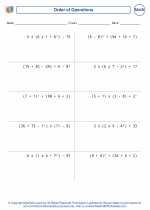Sequences of Numbers
A sequence is a list of numbers in a specific order. Each number in the sequence is called a term. The terms in a sequence can follow a specific pattern or rule, or they can be randomly ordered. Sequences are used in various mathematical and real-world contexts, such as in patterns, arithmetic progression, geometric progression, and more.
Types of Sequences
There are several types of sequences, including:
- Arithmetic Sequences: In an arithmetic sequence, each term is obtained by adding a constant value to the previous term. The constant value is called the common difference.
- Geometric Sequences: In a geometric sequence, each term is obtained by multiplying the previous term by a constant value. This constant value is called the common ratio.
- Fibonacci Sequence: The Fibonacci sequence is a series of numbers in which each number is the sum of the two preceding ones.
- Square Numbers Sequence: This sequence consists of the perfect squares, such as 1, 4, 9, 16, 25, and so on.
Study Guide
When studying sequences of numbers, it's important to understand the following key concepts:
- Identifying the type of sequence: Determine whether the given sequence is arithmetic, geometric, Fibonacci, or another type.
- Finding the next term: Given a sequence, calculate the next term based on the pattern or rule followed by the sequence.
- Solving for the nth term: Understand how to find the general formula for the nth term of a sequence.
- Sum of a sequence: Learn how to find the sum of a certain number of terms in a sequence, such as the sum of the first n terms.
Practice solving problems related to sequences, and familiarize yourself with the properties and formulas associated with different types of sequences. Understanding sequences of numbers will not only help you in mathematics but also in real-life scenarios where patterns and progressions are involved.
By mastering the concepts of sequences, you'll be better equipped to solve problems and analyze patterns in various mathematical and practical situations.
.◂Math Worksheets and Study Guides Fifth Grade. Order of Operations
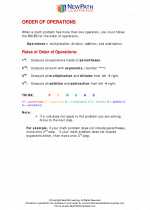
 Activity Lesson
Activity Lesson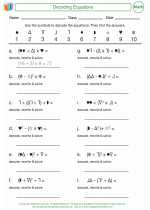
 Worksheet/Answer key
Worksheet/Answer key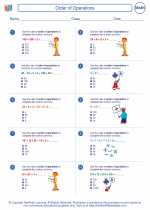
 Worksheet/Answer key
Worksheet/Answer key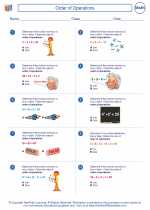
 Worksheet/Answer key
Worksheet/Answer key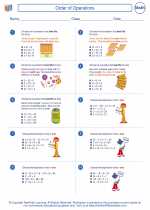
 Worksheet/Answer key
Worksheet/Answer key